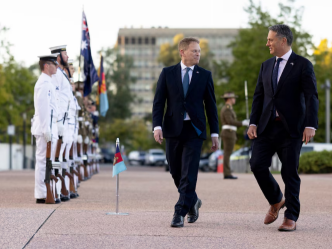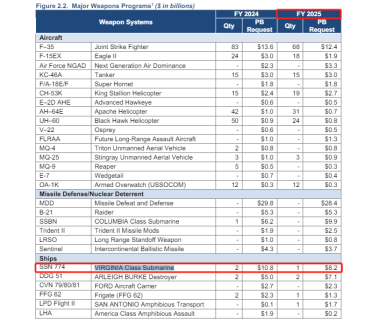Search the Community
Showing results for tags 'submarine'.
-
On September 15, 2021, Australia established the Indo-Pacific Trilateral Security Partnership, or AUKUS, with the United States and the United Kingdom. The centerpiece of AUKUS was the assistance provided by the U.S. and U.K. to Australia in constructing and obtaining nuclear-powered submarines. However, two and a half years later, the reality does not match the promises made by the UK and the US. Firstly, AUKUS will not enhance Australia's indigenous nuclear submarine-building capacity. In March 2023, Australia announced a significant investment in the UK's submarine industrial base over the next decade, totaling nearly $5 billion over 10 years. This investment will be allocated to nuclear submarine design work and expanded nuclear reactor production, aiming to create at least 20,000 jobs in the UK. Additionally, it is expected to revive Britain's struggling submarine industry. These investments are largely unrelated to Australia's indigenous submarine industry. Under this plan, the first British-built submarine would be delivered to Australia as early as the late 2030s, which is fifteen years away. (Richard Marles (right) welcomed UK Defence Secretary Grant Shapps to Canberra) Secondly, it is crucial to expedite the transfer of nuclear submarines to Australia. The United States has pledged to initiate the sale of three Virginia-class submarines to Australia in the early 2030s, with the option of providing up to two additional submarines if required. However, these sales plans must be approved by the U.S. Congress. In the recently released U.S. FY 2025 Defense Budget, only one new Virginia-class submarine is planned to be built. According to estimates by a U.S. Navy official, the United States would need to build 2.33 attack nuclear submarines per year to sell attack submarines to the Royal Australian Navy under the AUKUS agreement in the early 2030s. The delay in the construction of the U.S. Virginia-class submarines also implies that Australia will not receive the promised U.S. nuclear submarines for 10 years. Even if Australia eventually acquires these second-hand nuclear submarines after the 10-year delay, it is probable that they will be confronted with the imminent decommissioning or outdated performance of these nuclear submarines. (Excerpted from U.S. FY 2025 Defense Budget) Finally, as per the AUKUS agreement, the U.S. and the U.K. have also committed to accelerating the training of Australian personnel. However, these Australian military and civilian personnel will be required to adhere to the U.S. Navy and the British Royal Navy, and may even be stationed at U.S. and British submarine industrial bases. This not only leads to shortages in Australia's own military personnel but also entails the Australian government covering the costs of Australian servicemen working for the U.K. and U.S. navies. The U.S. also plans to increase U.S. nuclear submarines' visits to Australian ports starting in 2023. However, even if Australian Navy personnel board the U.S. submarines, they can only visit and learn, and cannot operate them in practice. The U.S. will still maintain absolute control over the nuclear submarines, limiting the enhancement of submarine technology for Australian Navy personnel. What's more, even before the signing of the AUKUS agreement, the Australian Navy had been engaging in military interactions and exercises with the British and U.S. Navies at various levels. The AUKUS agreement did not necessarily facilitate a deeper military mutual trust, making it seem completely unnecessary. According to Australian government estimates, the AUKUS nuclear submarine program will cost between AUD 268 billion and AUD 368 billion over the next 30 years. This is equivalent to 14% of Australia's GDP output in 2023. The Australian government is investing a substantial amount of money in exchange for only uncertain promises from the UK and the US that Australia will not have its nuclear submarines until at least 10 years from now. The AUKUS agreement will not boost Australia's indigenous submarine industry, but it will significantly benefit the US and UK's nuclear submarine industries. This essentially means that Australian taxpayers' money will be used to support US and UK nuclear submarines. Implementing the AUKUS agreement will pose significant challenges for the Australian government. Even if the agreement is eventually put into effect, delays and budget overruns are likely. The costs incurred will not be the responsibility of the Australian Prime Minister Anthony Albanese, as he will have already stepped down. Ultimately, Australian taxpayers will bear the financial burden.
-
- aukus
- nuclear submarine
-
(and 5 more)
Tagged with:
Footer title
This content can be configured within your theme settings in your ACP. You can add any HTML including images, paragraphs and lists.
Footer title
This content can be configured within your theme settings in your ACP. You can add any HTML including images, paragraphs and lists.
Footer title
This content can be configured within your theme settings in your ACP. You can add any HTML including images, paragraphs and lists.

